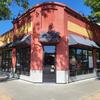Colorado home prices would need to fall by nearly a third to bring housing affordability in line with levels that existed in 2015, but that is unlikely to happen, according to a stark assessment from the Colorado Futures Center, which is affiliated with Colorado State University.
More precisely, home prices statewide would need to fall 32% to get affordability back to 2015, when three out of four homes were affordable to a household earning the state median income. The declines that would need to happen in each individual county ranged from 19% in Huerfano County on the low end to nearly 60% in Jackson County.
Costilla, Sedgwick, Summit and Grand are the other counties in Colorado that need to see a decline of about 50% or more to recapture prior levels of affordability.
“Colorado’s housing affordability challenge has been well documented, particularly as it became more acute in the second half of the last decade. The state’s strong recovery from the Great Recession and the pandemic, coupled with strong housing demand and limited supply on the market resulted in price pressures greater than any the state had seen in decades,” said co-authors Phyllis Resnick and Jennifer Newcomer in the report.
Why is 2015 a reference year? In 2007, 65% of the homes in the state were affordable to a household earning the median income. During the housing downturn, many borrowers lost their homes to foreclosure and prices dropped. By 2015, that affordability ratio has risen to 76% of homes affordable at the median level of income. Essentially, affordability went from two out of three houses to three out of four.
But affordability has deteriorated severely in the years since. Once the housing surplus from the ’00s was absorbed, new construction failed to match population growth. Demographic trends and an accommodative Federal Reserve monetary policy fueled demand. Home price gains have averaged 10% a year since mid-2015, far outstripping income gains. And the price gains experienced during the pandemic are the largest on record.
By 2020, only half of homes were affordable at the median household income and the situation got only worst after prices spike in 2021 and the first half of 2022.
Related Articles
-
Sponsored: Denver real estate star Cherry Creek prepares to shine brighter
-
Denver eyes turning a dozen downtown office buildings into apartments and condos
-
Colorado’s home price declines this summer third steepest in U.S.
-
Denver program offers free rent to fill empty storefronts
-
Metro Denver ranks fifth in U.S. for housing slowdown
Resnick, who also oversees a short-term economic forecast called FutureCast, said while the state may not be in a recession, the economy is slowing and vulnerable. Rising mortgage rates, which are now approaching 7% on a 30-year loan, are the highest in 15 years, increasing the odds of price declines, which are already underway.
Black Knight, a real estate data firm, said in a separate report that metro Denver’s home price index is down 6.4% from its recent peak. That is the largest decline seen in any metro after the California markets of San Jose, San Francisco and San Diego and Seattle and triple the 2% decline averaged nationally since June.
Slicing a third off of the recent peak in home values would be devastating, especially for recent buyers. Such dramatic declines weren’t seen even during the worst of the housing bust in Colorado. And they are unlikely to happen unless the bottom drops out of the economy. If that happened, then falling incomes would become a bigger issue in the affordability equation.
“We cannot rely on market adjustment alone to address affordability,” Resnick said.


